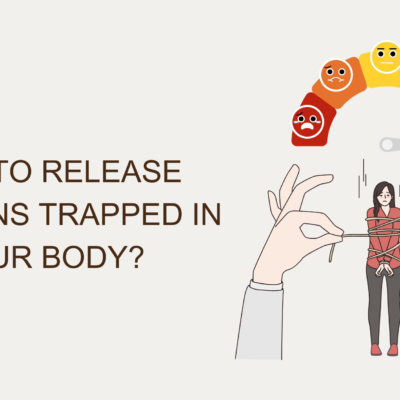How to Get Rid of Recurring Negative Thoughts: We’ve all experienced those moments when negative thoughts take over our minds—on repeat, like a song stuck in our heads. Whether it’s self-doubt, worry about the future, guilt from the past, or fear of failure, recurring negative thoughts can be mentally exhausting. They rob us of our peace, hinder our productivity, and slowly eat away at our self-confidence.
The good news is that while we can’t always control the first thought that pops into our minds, we can control what we do with it. In this article, we’ll explore why negative thoughts recur, and more importantly, how to stop them using science-backed techniques and mindful practices.
Also Read:
Understanding the Nature of Negative Thoughts
Before we dive into solutions, let’s understand what recurring negative thoughts actually are.
What Are Recurring Negative Thoughts?
These are automatic thoughts that repeatedly enter our minds, often without our permission. They can be about:
- Fear of failure
- Past mistakes
- Body image
- Relationships
- Self-worth
Why Do They Keep Coming Back?
Negative thoughts often become habitual because our brain is wired for survival, not happiness. This phenomenon is known as the negativity bias—the brain gives more weight to bad experiences than good ones. If you’ve ever had a hundred compliments and one criticism, you’ll likely remember the criticism most vividly. That’s negativity bias in action.
Moreover, when we engage with negative thoughts, we reinforce them. Over time, this creates neural pathways that make these thoughts easier to access and harder to dismiss.
Step 1: Become Aware of the Thought
The first step in overcoming any mental challenge is awareness.
Practice Mindfulness
Mindfulness helps us step back and observe our thoughts without judgment. It creates a gap between us and the thought, so we can choose how to respond.
How to practice:
- Sit quietly for 5–10 minutes daily.
- Focus on your breath.
- When a thought comes, just notice it. Say silently, “thinking” or “judging,” and gently return to your breath.
This practice, over time, makes you less reactive and more aware of your mental patterns.
Step 2: Question the Thought
Once you’re aware of a recurring negative thought, don’t take it at face value.
Use Cognitive Behavioral Therapy (CBT) Tools
CBT teaches us that thoughts are not facts. You can question them like a detective.
Ask yourself:
- Is this thought 100% true?
- What evidence do I have for and against it?
- Would I say this to a friend in a similar situation?
- Is there a more balanced perspective?
Write the answers down. Sometimes, seeing the thought on paper helps reduce its power.
Step 3: Reframe the Thought
Let’s say your recurring thought is, “I always fail at everything.”
Once you question it, you might reframe it to:
“I’ve faced setbacks, but I’ve also learned and succeeded many times. One failure doesn’t define me.”
Reframing doesn’t mean denying reality—it means choosing a more compassionate, helpful way to view it.
Step 4: Redirect Your Focus
The brain can’t focus on two things at once. So instead of fighting the negative thought, replace it with something meaningful.
Use “Thought Stopping” + Redirection
When the thought pops up:
- Say (out loud or silently): “Stop.”
- Immediately shift your attention. You can:
- Do a physical task (cleaning, walking)
- Call a friend
- Listen to uplifting music
- Repeat a mantra like, “I am safe. This too shall pass.”
The goal is to break the loop.
Step 5: Use Journaling as a Tool
Writing is a powerful way to clear the mental clutter.
Try This Daily Practice:
- Write the recurring thought at the top of a page.
- Under it, write:
- When does this thought usually come?
- What feelings does it trigger?
- What does this thought stop me from doing?
- What would I rather believe?
This turns your thought into a story—one you can revise.
Step 6: Work on the Root Cause
Sometimes, recurring negative thoughts are symptoms of deeper emotional wounds—unhealed trauma, unmet needs, or low self-esteem.
Consider These Healing Practices:
- Inner child work: Comfort and speak kindly to your younger self.
- Therapy: A mental health professional can help unpack patterns.
- Self-compassion: Treat yourself as you would a dear friend going through pain.
Step 7: Change Your Environment
Believe it or not, your physical and digital environment influences your thoughts.
Clean Up:
- Unfollow negative or toxic social media accounts.
- Spend less time with people who drain your energy.
- Create a calming space at home with plants, good lighting, or soft music.
A peaceful environment supports a peaceful mind.
Step 8: Move Your Body
Physical movement changes your brain chemistry. It boosts serotonin, dopamine, and endorphins—all of which help reduce negative thinking.
Try:
- A brisk 20-minute walk
- Dancing to your favorite song
- Yoga or stretching
- Any movement you enjoy
You don’t need a gym membership—just consistency.
Step 9: Practice Gratitude Daily
Gratitude is a scientifically proven way to shift mental focus from lack to abundance.
Try This:
- Every night, write down 3 things you’re grateful for.
- Be specific: “The warm sunlight on my face during lunch,” not just “the sun.”
Over time, your brain will start scanning for the positive automatically.
Step 10: Get Support
You don’t have to fight negative thoughts alone. Sometimes, what we need is connection, not correction.
Who Can Help:
- A trusted friend
- A therapist or coach
- Online communities with shared experiences
- Support groups for anxiety, depression, or trauma
Talking out your thoughts helps reduce their grip.
Bonus Tips: Quick Practices for When You’re Overwhelmed
Here are a few quick tools you can use in the moment when negative thoughts hit hard:
- 5-4-3-2-1 grounding technique (name 5 things you can see, 4 you can touch, etc.)
- Box breathing: Inhale 4 seconds, hold 4, exhale 4, hold 4.
- Cold water splash: It can snap your nervous system out of the stress loop.
Final Thoughts: Progress, Not Perfection
Getting rid of recurring negative thoughts is not about achieving a perfect, positive mind. It’s about building awareness, developing mental resilience, and creating space for kinder, more empowering beliefs.
You won’t eliminate all negative thoughts—and you don’t need to. What matters is your relationship with them. Are they controlling you? Or are you learning to observe them and gently let them go?
Healing is a journey. Be patient with yourself. You are already stronger than the thoughts trying to bring you down.
You Deserve Peace
Remember, just because a thought repeats doesn’t mean it’s true. Your mind is powerful—but you are even more powerful. With consistent effort, self-compassion, and the right tools, you can free yourself from the grip of negativity and live a more joyful, grounded life.
You’ve got this.






